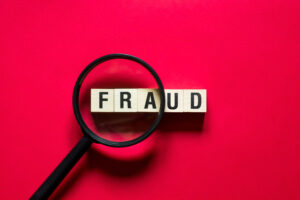Steps for your Financial Institution to Report Fraud

When you run a financial institution, fraud is always at the top of the priority list. Even with the most up-to-date security tools in place, fraud can still occur. To minimize losses, you need to help your customers report fraud.
Making It Easy to Report Fraud
If your customers suspect fraud, they should be able to report it easily. To make that possible, prominently display a dedicated fraud reporting phone number on your website. Additionally, assign the very first option on your customer service number to reporting fraud, and add a feature to your website or app for reporting fraud electronically.
Where Your Customer Should Report Fraud
In addition to having your customers report fraud to you, you may also want to encourage them to report fraud to the following government entities:
- FTC Complaint Assistant — This online tool lets your customers report fraud cases where someone is pretending to be from your financial institution, the government, or another business. It also accepts reports of scams, identity theft, credit and debit card fraud. Then, it compiles that information into a database to track fraud trends.
- FTC Bureau of Consumer Protection — To make reports through this organization, your customers should also use the complaint assistant, but they can learn more about fraud on this site.
- Gov — Also run by the FTC, this organization focuses specifically on identity theft, and it helps your customers work through the situation.
- US Postal Inspection Service — If a scammer tries to get information from your customers through the mail, they should report that using this service.
- FBI Internet Crime Complaint Center — This is for fraud that originates online, including wire transfer theft and phishing emails.
You may even want to put links like this on your website so that your customers know what to do when they experience fraud.
Types of Fraud Your Customers Should Report
In a lot of cases, people only consider something to be fraud if they lose money in the endeavor, and when that happens, your customers should alert you immediately. However, beyond credit and debit card fraud, forged checks, identity theft, and similar types of fraud, your customers should also report attempted fraud.
Encourage your customers to let you know if they receive texts, emails, or phone calls that pretend to be your financial institution. Additionally, if they have shared their banking details with a stranger, they should also let you know. Then, you can shut down the affected accounts before any funds are stolen.
You can also take steps to educate your other clients about relevant threats. For instance, large financial institutions such as Chase Bank publish copies of phishing emails that their customers have received on their websites. That information helps people learn how to spot and avoid fraudulent communications.
Where You Should Report Fraud?
In addition to reaching out to the authorities, may want to join an anti-fraud networking group that lets you share information about risks with other financial institutions. Thanks to a provision of the US Patriot Act, you can share this information freely. To participate, you have to notify the Treasury Department and you can only share information for the purpose of identifying fraud such as money laundering and terrorist financing. Some of the networking options include The Financial Services Information Sharing and Analysis Center and Clarient Global.
Handling Customer Fraud Reports
When a customer approaches you to report fraud, help them shut down their affected cards and accounts and assist them in opening new accounts. Also, remember that your customers may feel angry and frustrated during this time, so it’s important to try to make the process as easy and stress-free as possible for them.
To protect yourself, have your customers sign an affidavit that they are really making the complaint. That way, if it turns out that they made the complaint erroneously or fraudulently, you can hold them responsible for all costs involved should you choose to. In cases where the fraudster made a purchase, you may need to contact the merchant for more information, and you may need to subpoena records about when purchases were made or where online purchases were sent so that you can figure out what happened.
Responding to Fraud Reports
Regardless of which steps you decide to take, keep in mind that it’s important to respond to fraud reports in a timely fashion. According to the FTC, if you ignore complaints related to credit card charges or wait too long to respond, you may not be able to collect the amount in dispute even if your customer was responsible for the charges.
Reducing Fraud Reports
To reduce the fraud reports your financial institution receives, you may want to put spending limits on your customer’s accounts. You may also want to focus on customer and employee education, but most importantly, you need fraud protection tools. To get help, contact SQN Banking Systems today.
